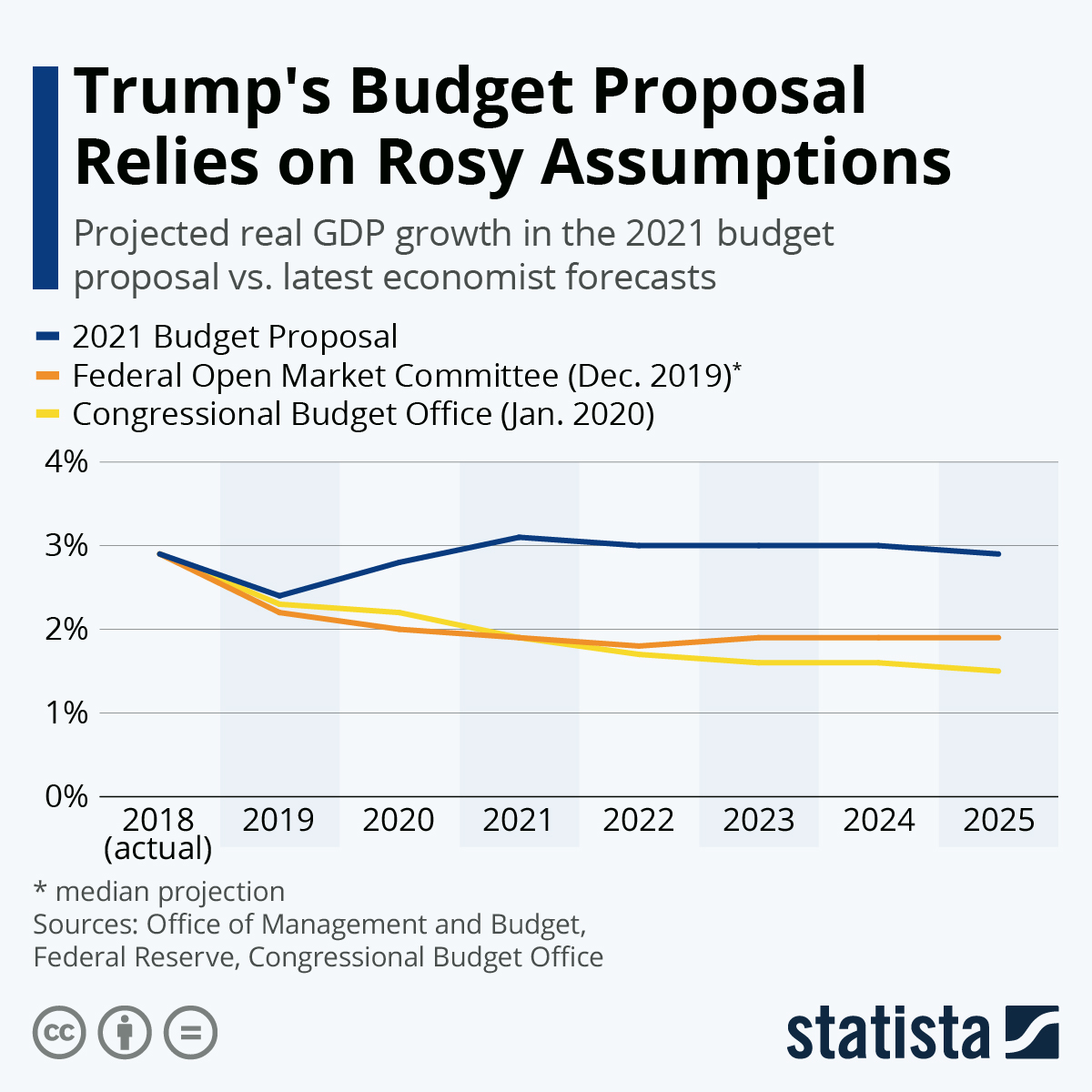The Trump administration released a $4.8 trillion budget proposal on Monday, including deep cuts to federal safety net programs that will likely appeal to the President’s Republican base in election year. The “Budget for America’s Future”, which is unlikely to be approved by Congress, proposes to curb funding for major federal agencies overseeing domestic programs, while increasing spending on homeland security, defense and veterans affairs. While the proposed budget assumes deficits in excess of or close to $1 trillion for 2020 and 2021, it also lays out a plan for eliminating the deficit entirely over the next 15 years, a feat that seems highly unlikely from today’s point of view.
Widely considered a political message rather than an actual proposal that could be greenlit by Congress, Trump’s 2021 budget relies on some very optimistic assumptions. So optimistic in fact, that it defies some of the country’s most renowned economists. As our chart shows, the White House predicts real GDP growth of 2.8 percent this year and 3.1 percent in 2021, topping the latest forecasts by the Federal Open Market Committee and the Congressional Budget Office by 0.8 and 0.6 percentage points for this year and by at least 1 percentage point for each year through 2025.
When asked about the seemingly very optimistic outlook underlying the budget, Russ Vought, acting Director of the Office of Management and Budget, defended the proposal, saying it’s a “post-policy budget” assuming an infrastructure spending package that the Trump administration has repeatedly pushed for in the past. “So, again, as why we feel comfortable projecting 3 percent: because it’s our fiscal plan based on the policies that we proposed”, Vought said.
That puts Republicans in a comfortable situation. In case they don’t achieve the growth numbers projected in the budget proposal, they can blame Democrats for blocking the policies that would have gotten them there. And in case they do, all the better.




















